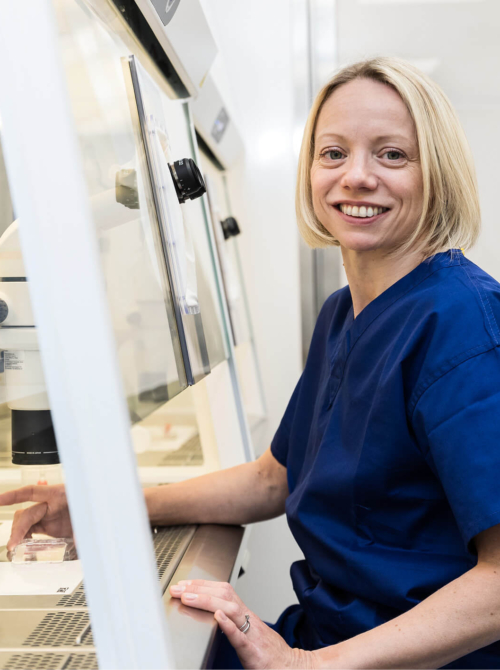What do we consider as success at The Evewell?
When people talk about IVF and fertility treatment, “success” is usually measured in one ultimate outcome: taking home a baby. Of course, this is the goal for every patient who comes to The Evewell, and it is what we all strive towards. But as an embryologist, I know that success is not only about that final outcome. It is built from many crucial stages in the journey, long before a pregnancy test or live birth figure can be counted in statistics.
To truly understand success in fertility treatment, we need to appreciate the smaller yet essential milestones that make the final goal possible.
Why IVF success rates don’t tell the whole story
When patients look at fertility clinics, they often focus on published IVF success rates. These are usually linked to pregnancy or live birth following an embryo transfer. While these numbers provide a useful comparison, they don’t always reflect the entire journey.
Many steps happen before an embryo can even be created, let alone transferred into the uterus. If these early stages don’t go as planned, a patient may never even appear in a clinic’s official success rates. That’s why, from my perspective as an embryologist, success begins much earlier, and each step is worthy of recognition.
Step one: successful egg collection
The first critical milestone is egg collection. This procedure involves retrieving mature eggs from the ovaries after stimulation. It’s a delicate process that requires both medical expertise and careful timing.
Every egg collected is a success because it represents potential. Without eggs, there can be no embryos, and without embryos, there can be no transfer or pregnancy. For many patients, just reaching the stage of egg collection can feel like an achievement in itself, especially if they have experienced challenges such as low ovarian reserve or difficulty with stimulation.
Step two: fertilisation in the laboratory
Once eggs are collected, the next stage takes place in the laboratory, and this is where my team plays a central role. Fertilisation is not guaranteed, and it requires precision, care, and optimal conditions. Whether we use conventional IVF or ICSI (intracytoplasmic sperm injection), our job is to create the environment that allows sperm and egg to meet successfully.
When fertilisation happens, it is a huge success. It means that the building blocks for life have combined, and we can move forward. Each fertilised egg brings new hope and possibilities.
Step three: embryo development
After fertilisation, embryos must grow and develop in culture conditions that mimic the natural environment of the uterus as closely as possible. This is one of the most complex and carefully controlled stages of IVF.
Not every fertilised egg will develop into a viable embryo, and this can be difficult for patients to process. But when an embryo grows as it should, it is another clear success. It means that the conditions in the lab are right, and the embryo has the potential to continue developing into a pregnancy.
Step four: embryo transfer
Only when embryos have reached the right stage, often the blastocyst stage, can we move to embryo transfer. This is the step that most people associate with IVF success, and it is the point where patients usually enter into the published success rate figures.
But the embryo transfer is only possible because of all the successes that came before. Without eggs, fertilisation, and embryo growth, there would be no embryo to transfer. Each of those earlier moments is just as important, even if they are less visible in the statistics.
Redefining success in fertility treatment
At The Evewell, we believe that success should not only be defined by pregnancy or birth. Of course, taking home a healthy baby is the ultimate goal, but every milestone along the way is meaningful.
Each successful egg collection, each fertilised egg, each embryo that develops, these are all markers of progress and hope. They are achievements in themselves, and they are what make the final outcome possible.
By redefining success to include all these steps, we not only help patients understand the complexity of IVF but also give them the recognition they deserve for every stage they complete. Fertility treatment is a journey, and celebrating each success along the way makes that journey feel more supported and empowering.





